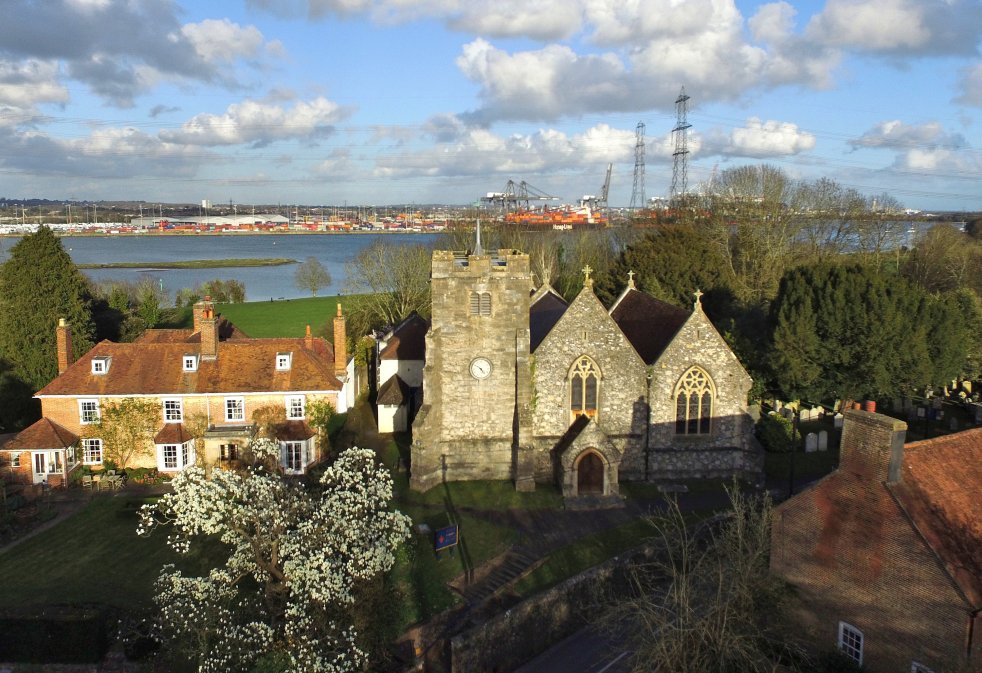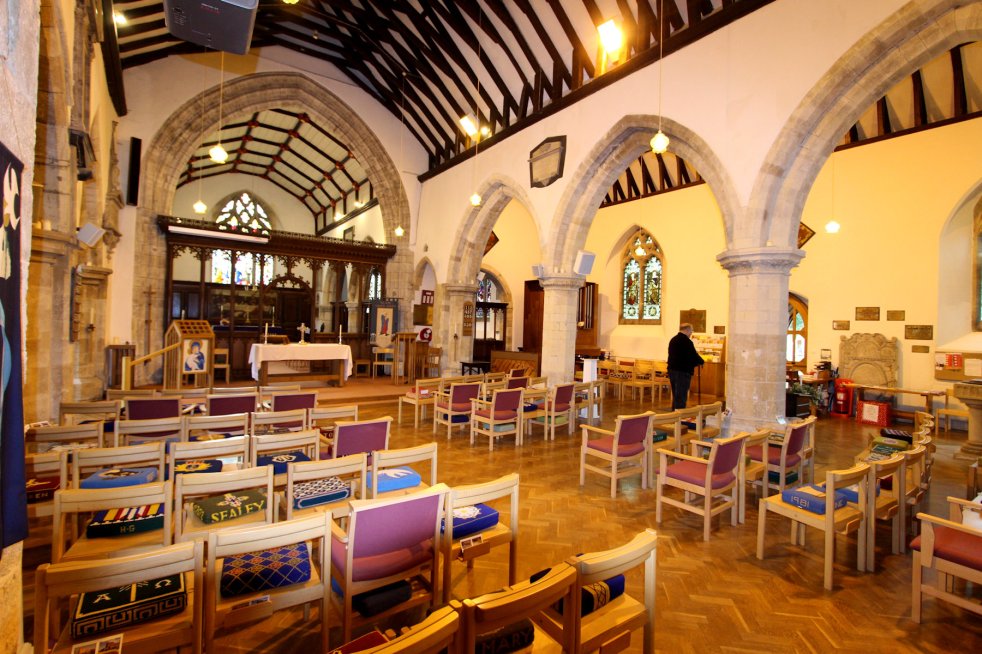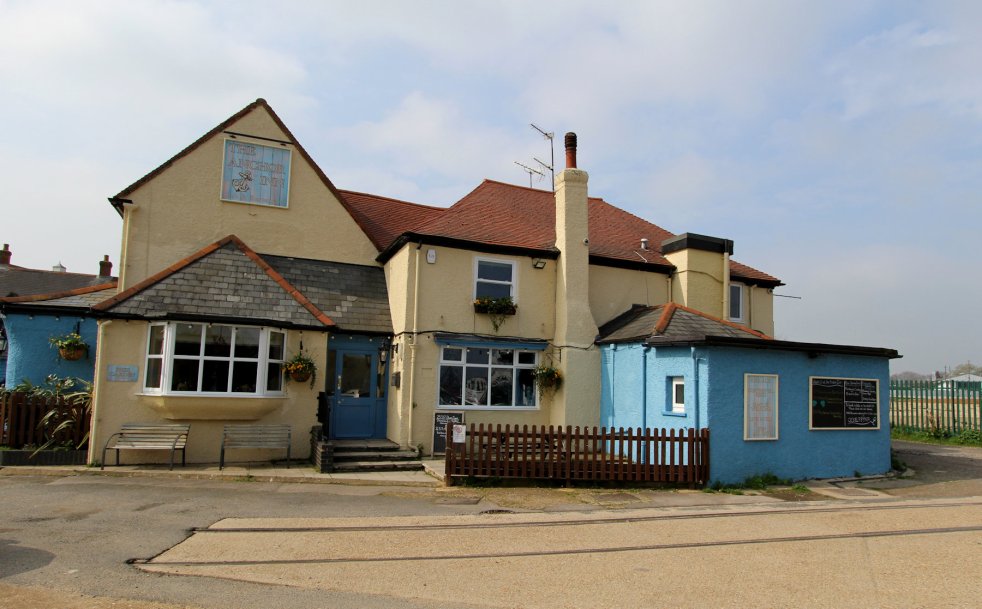St Mary the Virgin, to give it its full title, is the 10th oldest church in England. It is Saxon in origin and dates from 850 AD. Over the centuries the building has seen many alterations and additions, and little of the the earliest structure remains. There is, however, a small Saxon window that originally would have been in a fortified area of an upper floor that could be used as a refuge in the event of an attack. The present nave dates from the 11th – 12th century and the bell tower from the 16th century. The church was drastically restored during the period 1863 – 1865 so that, apart from the tower, externally the building looks Victorian rather than medieval. The splendid lych gate with its Arts and Crafts metal gates was erected in celebration of Edward Vll’s coronation in 1902.
The graveyard is estimated to hold 30,000 burials, hardly surprising since it has been used for at least 900 years.



Saxon relics – The window and the recently unearthed 1,200 year old foundation stone


We had to make prior arrangements to visit St. Mary’s as the church doors are normally kept locked, apparently a requirement from the church’s insurers due to the presence of the Marziale painting above the alter. We met up at the nearby car park and walked the 100 yards up the hill to the church where we met the friendly Church Warden, Graham Norman.
On entering the darkened building Graham switched on the numerous lights revealing a cheerful interior accentuated by an eye-catching variety of kneelers on the chairs, each with its own highly individual and colourful design. There was a crèche with children’s toys in one corner and altogether there was the impression that this was a family friendly, living church.
We had done some pre-visit research beforehand so we knew the highlights to seek out, but without Graham’s guidance I doubt we would have found the oldest relic of them all – the recently discovered 850AD foundation stone. MW
Eling
From the church, our lunch venue was just a few hundred yards away but en route we had to cross the toll bridge/causeway. This ancient structure incorporates one of only two working tide mills that still produces flour daily. It is driven by harnessing the power of the the tides to grind wheat into wholemeal flour. There has been a mill at this site for over 900 years, although periodically storms have washed away both mill and causeway . The present mill was built in the 1770’s following severe storm damage to the previous structure. In its heyday the mill was capable of grinding up to 4 tons of flour a day but now it produces much less, mainly for the benefit of locals and tourists.
At one time the Eling harbour was a busy commercial port where ship building thrived, but now the only vessels tied up are strictly for pleasure.

The Anchor Inn
There has been an Anchor Inn on this site, in one form or another, for the past 500 years and for most of that time its main business came from the shipbuilding and dock workers. Now it serves mainly local residents and tourists.


Unlike me, MW is not a pub man, so he approached our lunch with some caution but, in entering into the spirit of the occasion, he agreed to forgo the usual wine accompaniment to our meal in favour of one of their speciality beers. These real ales are clearly a passion of the establishment and I was was delighted to hear the landlady admonish two drinkers for ordering lagers in preferencef to proper beer. On her advice we ordered two halves of one of the St Austell Brewery range of speciality beers, but after pouring the first, the barrel was empty. In most pubs that would be it until after service, and an alternative would be offered. But in this instance our hostess went down herself to change the barrel, an onerous task, over and above the call of duty. It was at this moment that I fell in love with this hostelry and the subsequent substantial and well cooked meal was certainly well above expectation. So many public houses fall down by concentrating only on the preparation of meals and overlook the art and craft of presenting real ales. BQ
Our lunch
- Fish Pie BQ
- Three Bean Chilli MW
- Shorts St Austell beer


